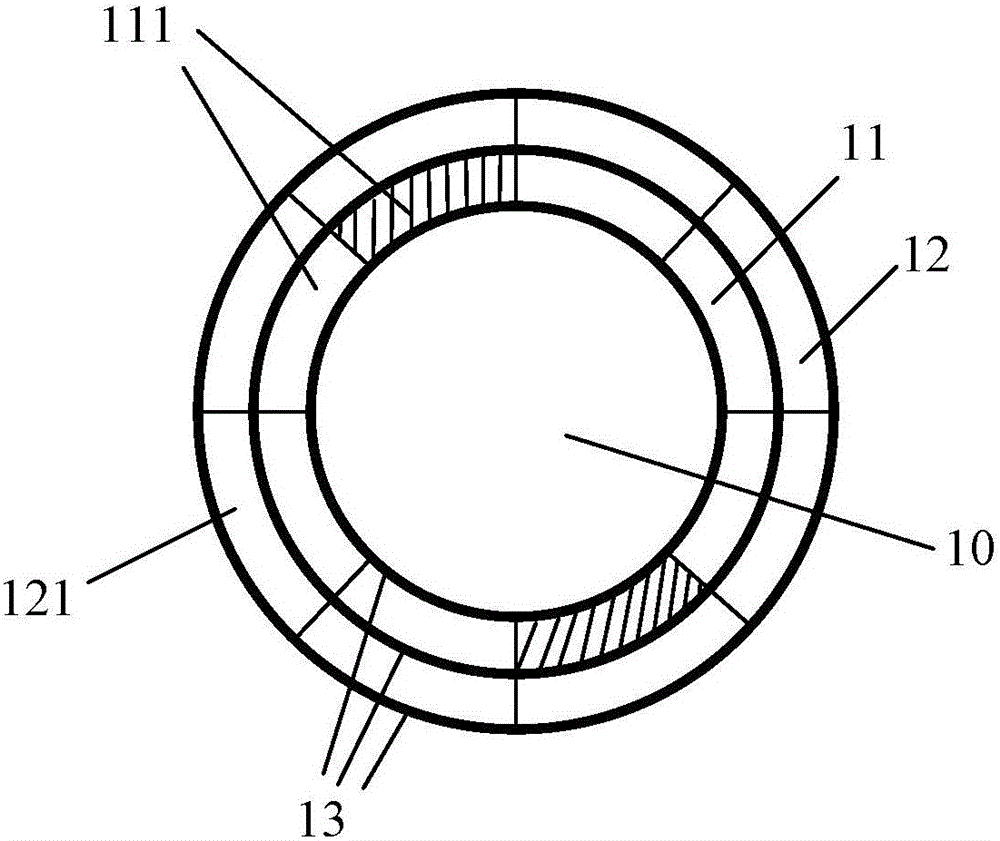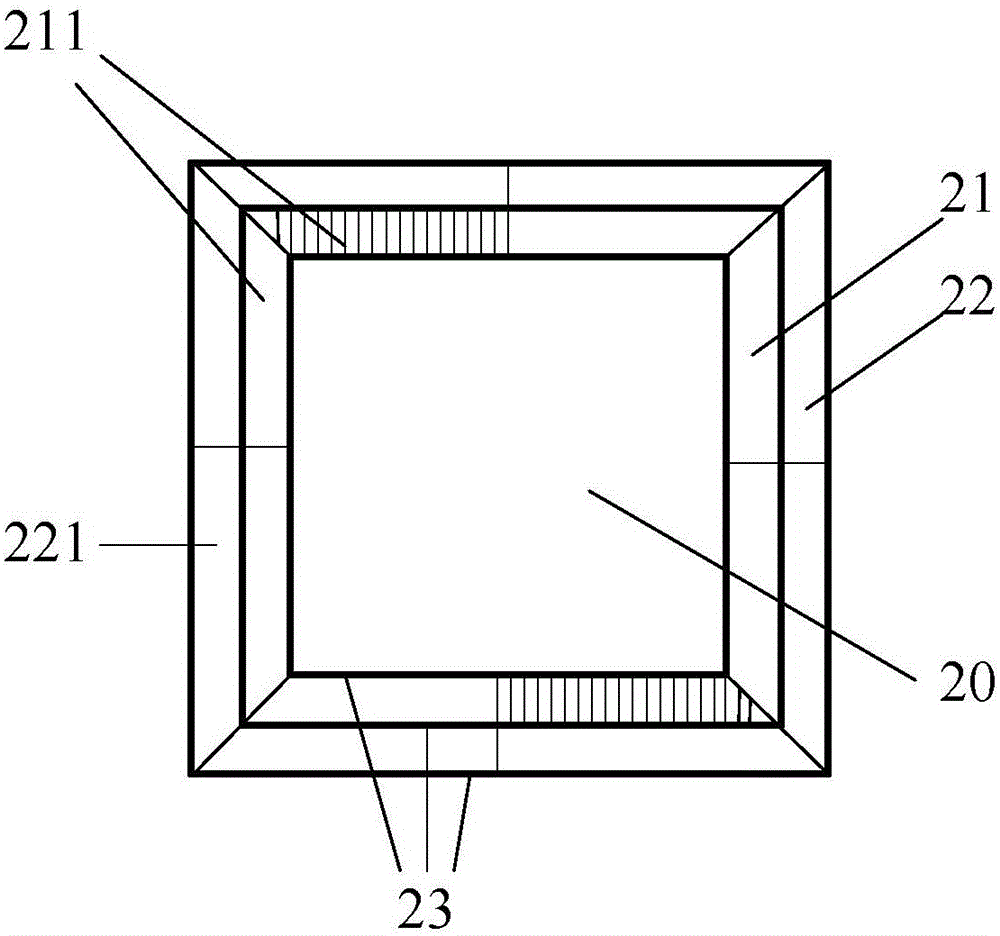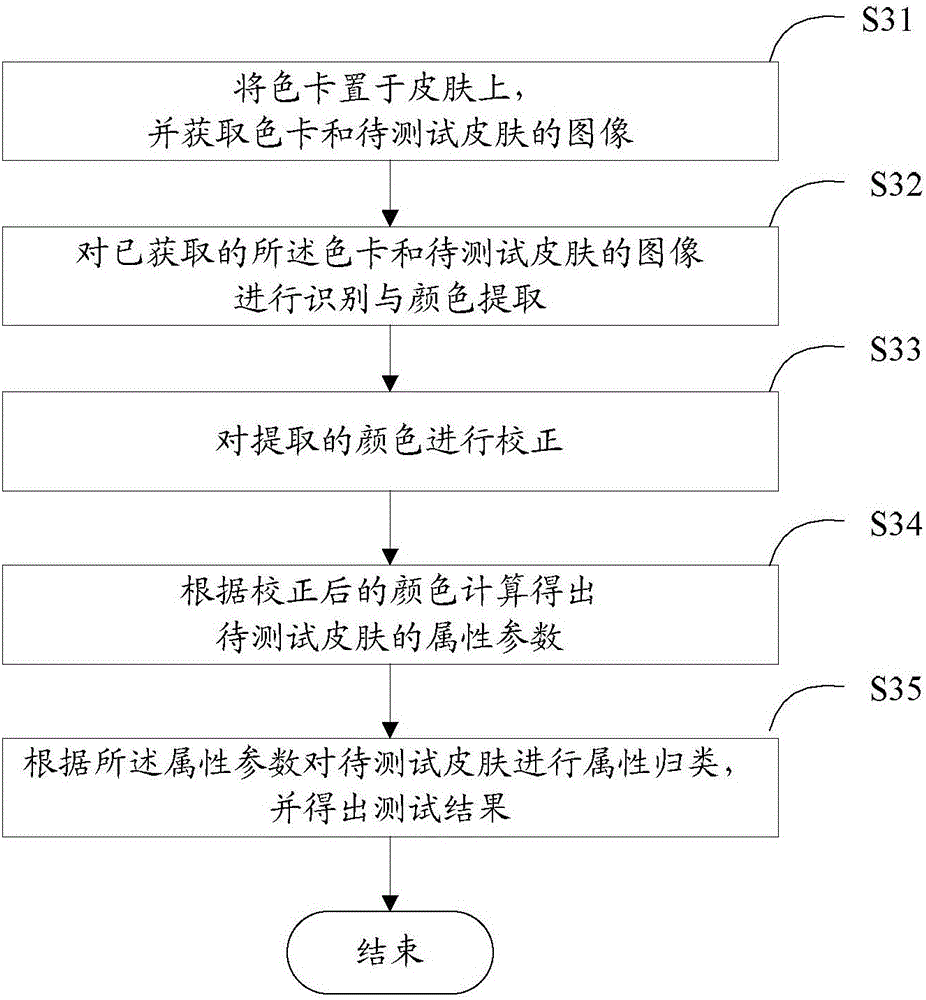A way to test the skin
A skin-to-be-tested technology, applied in diagnostic recording/measurement, medical science, sensors, etc., can solve the problems of complex use, low accuracy, and high system cost, and achieve the effect of easy operation
- Summary
- Abstract
- Description
- Claims
- Application Information
AI Technical Summary
Problems solved by technology
Method used
Image
Examples
Embodiment 1
[0022] Embodiment 1. The color card of this embodiment is used to test the skin. Taking the circular color circle as an example, see figure 1 As shown, it mainly includes: an inner color circle 11, an outer color circle 12, and a circular hollow area 10 inside the inner color circle 11. In this embodiment, the inner color circle 11 is equally divided into 8 color blocks 111 , and the outer color circle 12 is equally divided into 8 color blocks 121 , so there are 16 color block areas in two layers of color circles. In this embodiment, 8 colors are used symmetrically to fill the above 16 color blocks. These 8 colors include but are not limited to 7 basic skin colors ( figure 1 In white, the actual product is 7 basic skin colors) and black (that is, non-skin color, figure 1 are indicated by slash padding). Regarding the above-mentioned 7 basic skin colors, it is enough to randomly collect 7 experimenters. In order to achieve more accurate test results, in the research and deve...
Embodiment 2
[0023] Embodiment 2, the color card of this embodiment is used to test the skin, taking the square color circle as an example, see figure 2 As shown, it mainly includes: an inner color ring 21 , an outer color ring 22 , and a square hollow area 20 inside the inner color ring 21 . In this embodiment, the inner color ring 21 is equally divided into 8 color blocks 211 , and the outer color ring 22 is equally divided into 8 color blocks 221 , and the two layers of color rings have 16 color block regions in total. In this embodiment, 8 colors are used symmetrically to fill the above 16 color blocks. These 8 colors include but are not limited to 7 basic skin colors ( figure 2 In white, the actual product is 7 basic skin colors) and blue (that is, non-skin color, figure 2 are indicated by slash padding). Regarding the above-mentioned 7 basic skin colors, it is enough to randomly collect 7 experimenters. In order to achieve more accurate test results, in the research and develop...
Embodiment 3
[0024] Embodiment 3. This embodiment provides a method for testing skin, which is implemented by using the color cards of the above-mentioned embodiment 1 or 2. For the convenience of description, the color card of embodiment 1 is used as an example, see image 3 shown, including the following main steps:
[0025] S31. Put the color card on the skin, and acquire the image of the color card and the skin to be tested.
[0026] In a specific implementation, a smartphone is used to take pictures. Match the red color ring of the camera screen with the color ring of the color card. When the red color ring of the camera screen basically fits the color ring of the color card and the focus is successful, the device will automatically take a picture.
[0027] S32. Perform recognition and color extraction on the acquired color card and the image of the skin to be tested.
[0028] Sampling (zooming) the acquired image. Because the resolution of the original image is around 8M, the calc...
PUM
 Login to View More
Login to View More Abstract
Description
Claims
Application Information
 Login to View More
Login to View More - R&D
- Intellectual Property
- Life Sciences
- Materials
- Tech Scout
- Unparalleled Data Quality
- Higher Quality Content
- 60% Fewer Hallucinations
Browse by: Latest US Patents, China's latest patents, Technical Efficacy Thesaurus, Application Domain, Technology Topic, Popular Technical Reports.
© 2025 PatSnap. All rights reserved.Legal|Privacy policy|Modern Slavery Act Transparency Statement|Sitemap|About US| Contact US: help@patsnap.com



